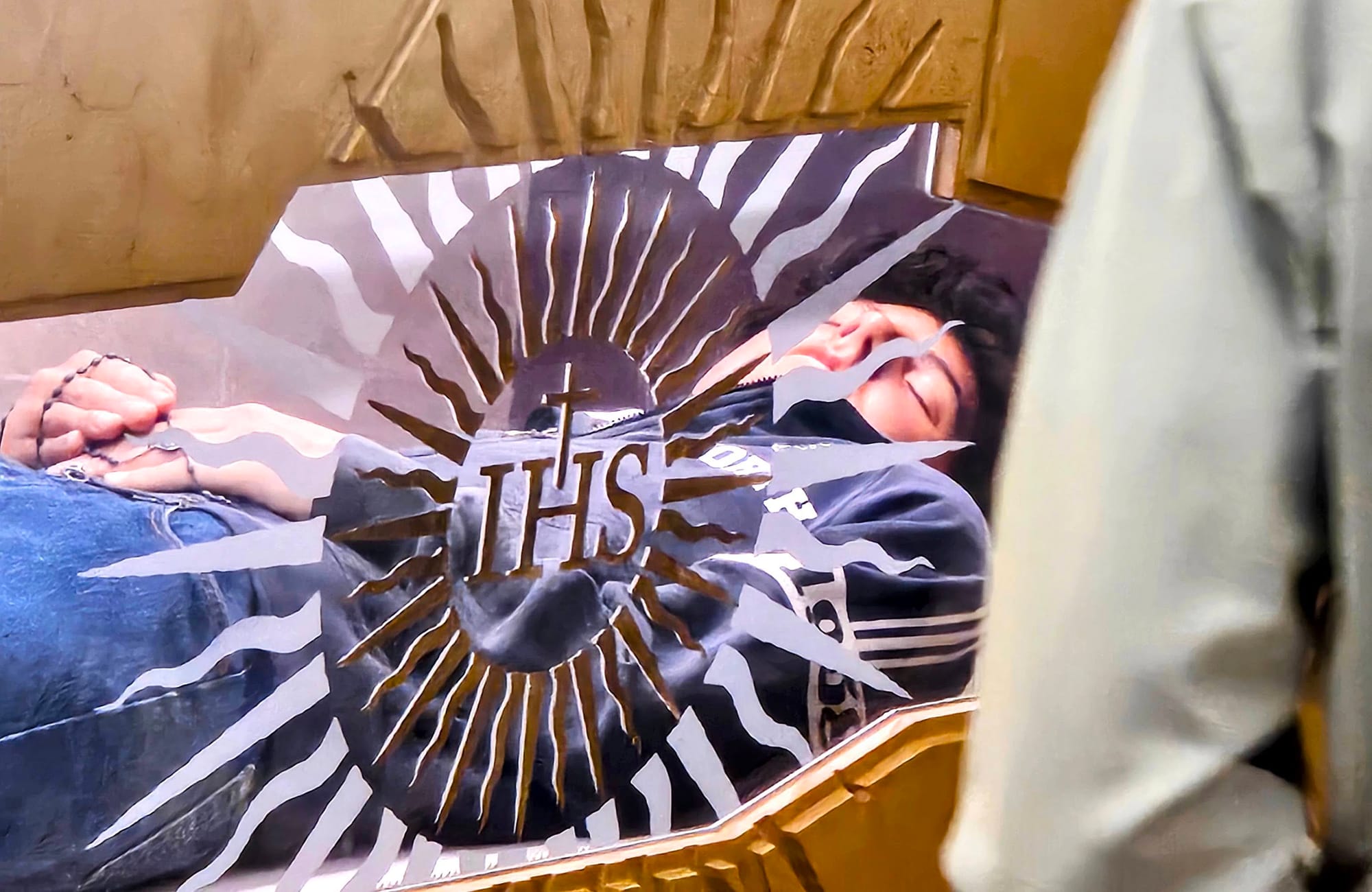
When I walked into the Shrine of the Renunciation in Assisi, I thought about going to my friends’ houses in high school to play Xbox, and how bizarre it would be if one of those teenagers became a saint. What if the kid from down the cul-de-sac died, and they put his face on keychains, fridge magnets, and rosaries, and people stood in line to see his dead body through glass?
I was there to see Carlo Acutis, the first Millennial Saint, who was born in 1991 and died at 15 years old of leukemia in 2006. By all accounts, he was a fairly normal—if not unusually pious—teenager. He reportedly knew Javascript and C++, tinkered with 3D rendering in Maya, and played Halo, Super Mario and Pokémon games. His mom said he bought a Playstation when he was eight. Notably, Halo was Xbox-exclusive, making this an inconsistency in the narrative of Acutis’ life (but whose mom didn’t call every gaming console “the Sony” or some other wildly incorrect catchall). He’s been called the “gamer saint,” but only gamed about an hour a week, wary of getting too hooked on gaming. He used his programming skills to make websites for volunteer projects and documenting historical miracles.
He was a kid, and now his body is coated in wax and dressed in a red track jacket, jeans, and Nikes and lies in a church in a tiny Italian hill town where people arrive on tour buses to kiss their fingers and touch the glass next to his head of thick black hair.
📹VIDEO | The body of Blessed Carlo Acutis is exposed in Assisi, Italy, and even though authorities within the Catholic Church have said the body is not incorrupt, his almost intact appearance is astounding. Future Saint Carlo Acutis, pray for us! pic.twitter.com/97I0BTq97K
— EWTN Vatican (@EWTNVatican) May 23, 2024
Standing in a short line to get a look at Acutis, people snapped sneaky photos on their phones in front of a “NO PHOTOS” sign. A group of old women sat against the wall in front of the tomb, gazing at his waxy face and soaking up as much Blessedness as possible. Most milled past with a short pause near his reposed head to clutch a rosary or do a half-kneel. I stopped long enough to gawk then moved to the pews and copied a messy sign of the cross from other worshippers as a midday service began.
I went into my own off-books pilgrimage knowing almost nothing about Catholic sainthood. I was in nearby Perugia, Italy for the International Journalism Festival and decided to take the train out on a day trip to Assisi, to see the “Patron Saint of the Internet” in person. But having spent a lot of time in youth groups in a variety of Protestant flavors, I do know an attempt to make the church Cool when I see one.
Among religious groups, Catholics are experiencing one of the largest recent declines in church attendance in the U.S., from 45 percent to 33 percent in the last two decades. Meanwhile, the share of Amercans without any religious affiliation is up by a lot: nine percent in 2000-2003 versus 21 percent in 2021-2023. This, of course, is a big problem for the Catholic church: The median age of Catholic adults in the U.S. is 49 years old, according to Pew Research Center, four years older than in 2007. Only 17 percent are under 30 years old. Members = money in most religions, and young members mean the money keeps flowing through generations.
Add to this the Catholic Church’s ongoing image crisis, with hundreds of clergy credibly accused of child sex abuse; meanwhile, the Washington State Catholic Conference is opposing new legislation that would require clergy in the state to report sexual abuse if it’s disclosed to them in confessionals, with Republican legislators calling it “an attack” on Catholisim.
In comes the Millennial Saint, a relatable example of piety and discernment for modern youths. Before him, the most recently-canonized saints lived and died in the 1800s. Acutis is different: He had a phone! He made websites about miracles! He wore sneakers! He’s “God’s influencer.” Supplicants see him as somehow both approachably normal and extraordinarily devout. He was reportedly “uninterested in the trappings common for a wealthy child in Milan,” asking his parents to donate the money they would have spent on more designer sneakers to the poor and skipping ski trips to teach catechism instead. Having been a pious little Christian teen myself, I can definitely relate.
Blessed Carlo Acutis, pray for us!
This is the first time that a contemporary saint is dressed with Nike shoes, jeans, and a sweater. Cool? Yes. But it tells us that the call to holiness is never ever only reserved to the ones in the convents but to all…yes, even to geeks! pic.twitter.com/vDcrmqTEHD
— Fr. Myke, MSC (@popmonkph) October 11, 2023
The campaign for Acutis the Influencer seems to be working, based on the sheer SEO power of the news of Acutis’s sainthood and the number of people asking questions, writing blog posts, and making the pilgrimage to see his tomb. Tens of thousands of people are expected to attend Acutis’ canonization service in Rome later this month—thousands of which, it’s safe to assume, will be there on Catholic high school field trips. For those who can’t make the trip, there are screenings of the Eternal Word Television Network’s film Roadmap to Reality, a documentary about teenagers visiting Acutis’ tomb but also serves as a warning about the ills of technology.
“In a world losing itself to screens, teenage mystic Carlo Acutis saw beyond the social media-addicted society we live in and offered an answer… if we’re willing to listen,” the filmmakers wrote on the documentary’s website. “Carlo emphasized that the Eucharist, with its real presence and physical communion, serves as a critical anchoring reality. This idea starkly contrasts the often isolating and superficial interactions fostered by digital technology.”
Coincidentally, technology is bedeviling Acutis’ early days as a saint. On eBay, people are selling what they claim to be his “relics,” tiny pieces of a saint’s body. One anonymous seller was selling “supposedly authenticated locks of Acutis’ hair that were fetching upward of 2,000 euros ($2,200 US), according to the Diocese of Assisi, before being taken down,” the AP reported. “It’s not just despicable, but it’s also a sin,” one reverend who has a tiny fragment of Acutis’ hair in a chapel by his office told the AP. “Every kind of commerce over faith is a sin.”
There is a lot of non-relic commerce happening at the Shrine of the Renunciation, however. It’s free to enter the church, but there is a gift shop around the corner at the exit.
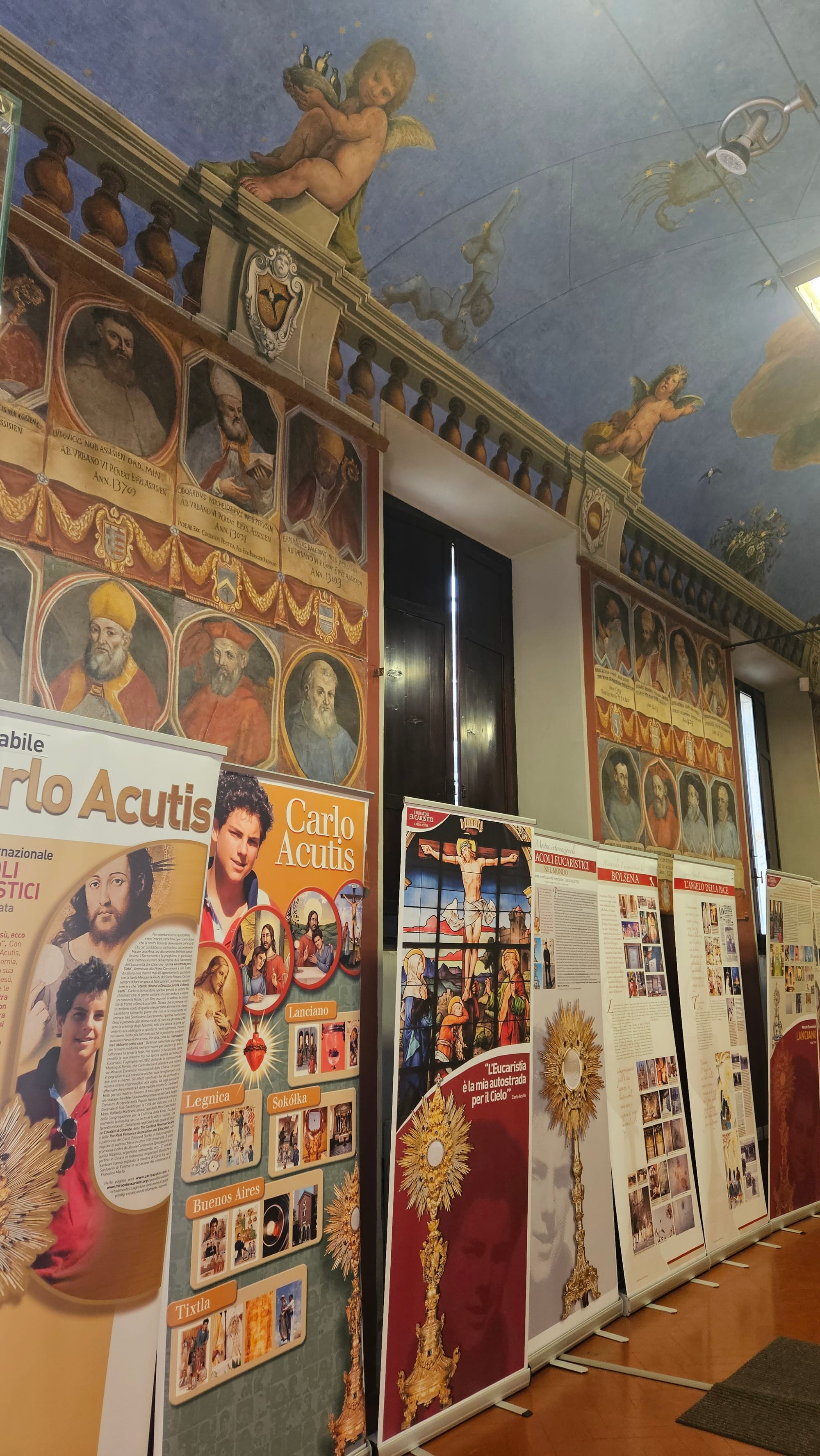
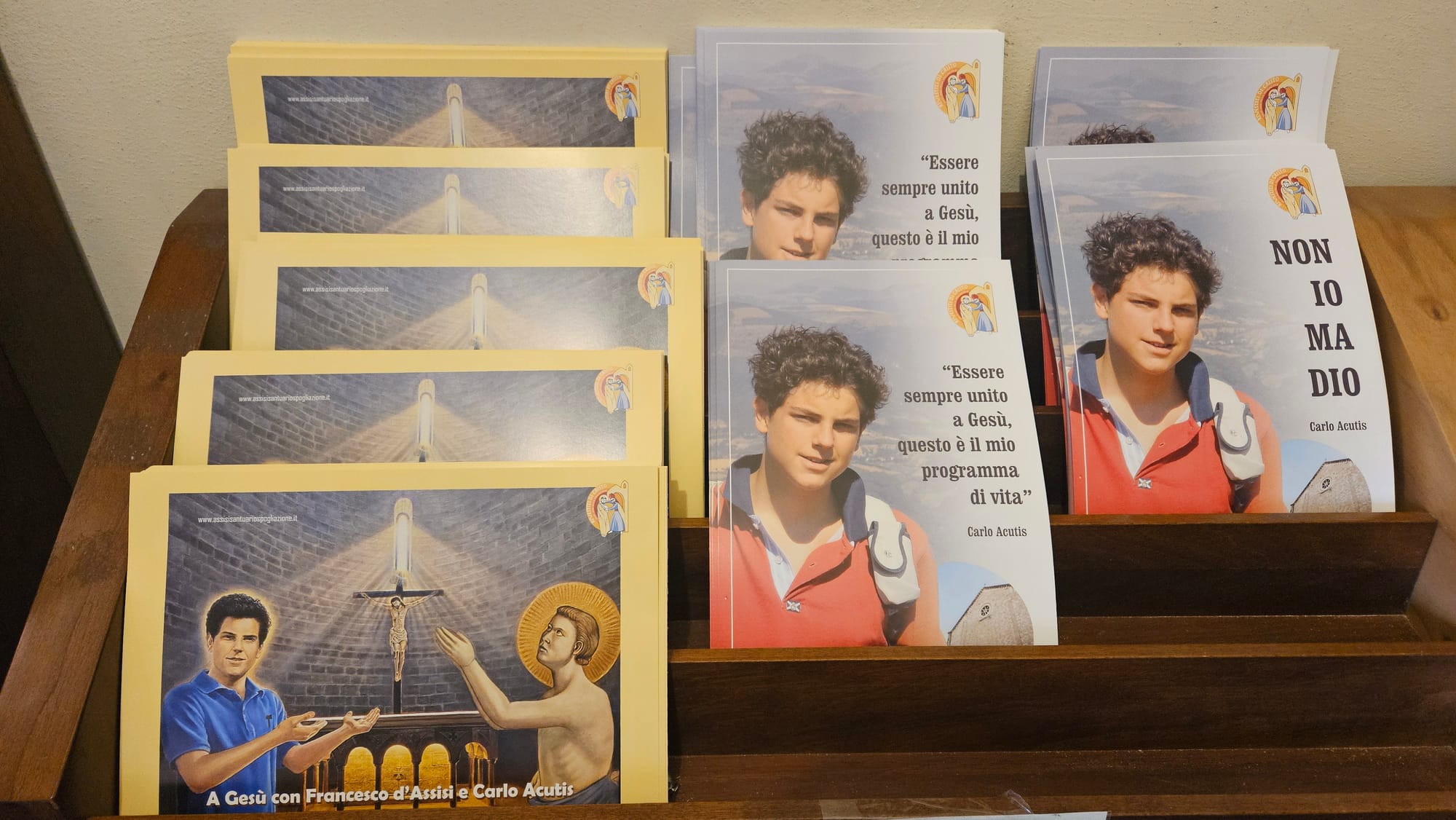

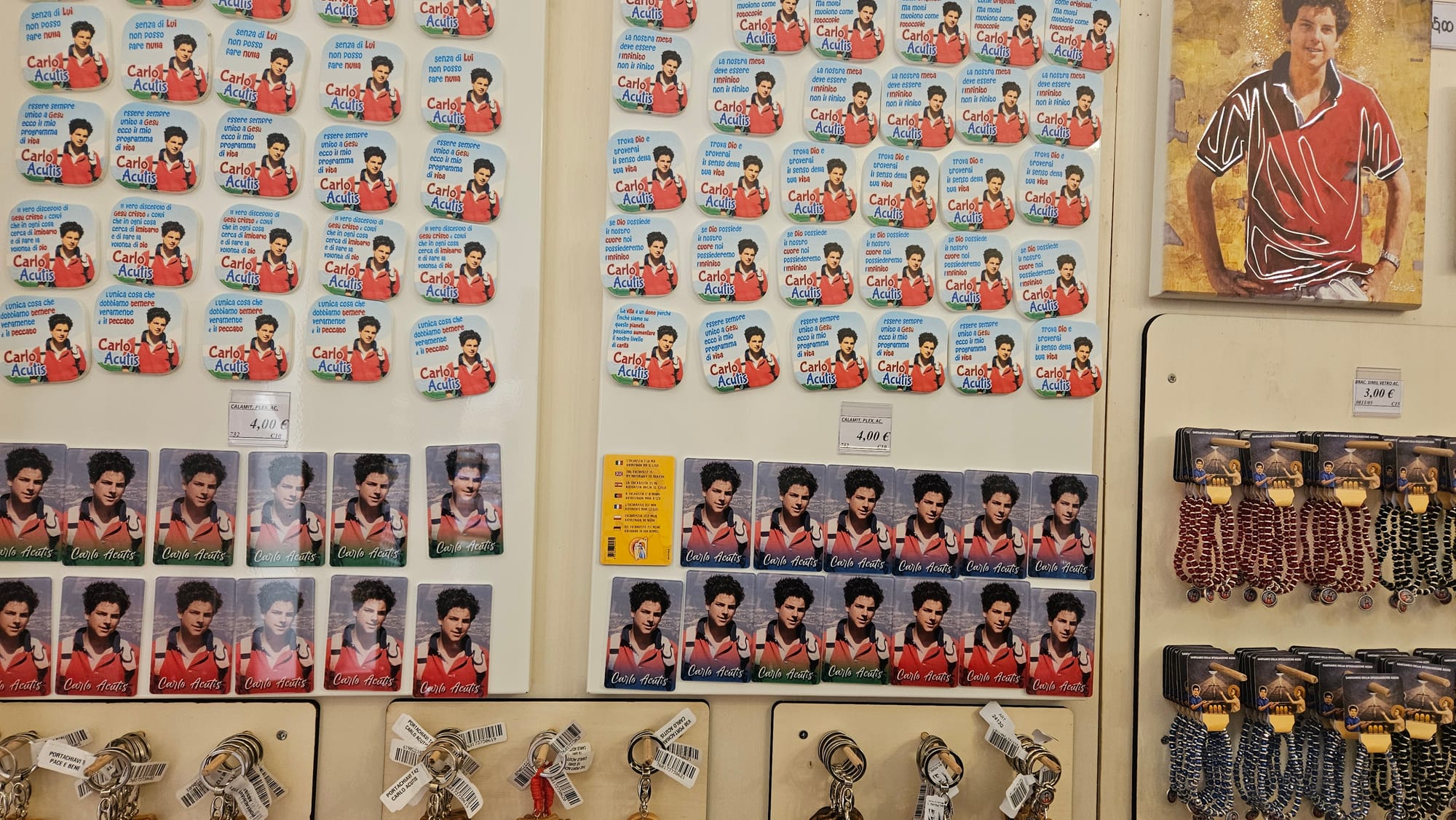



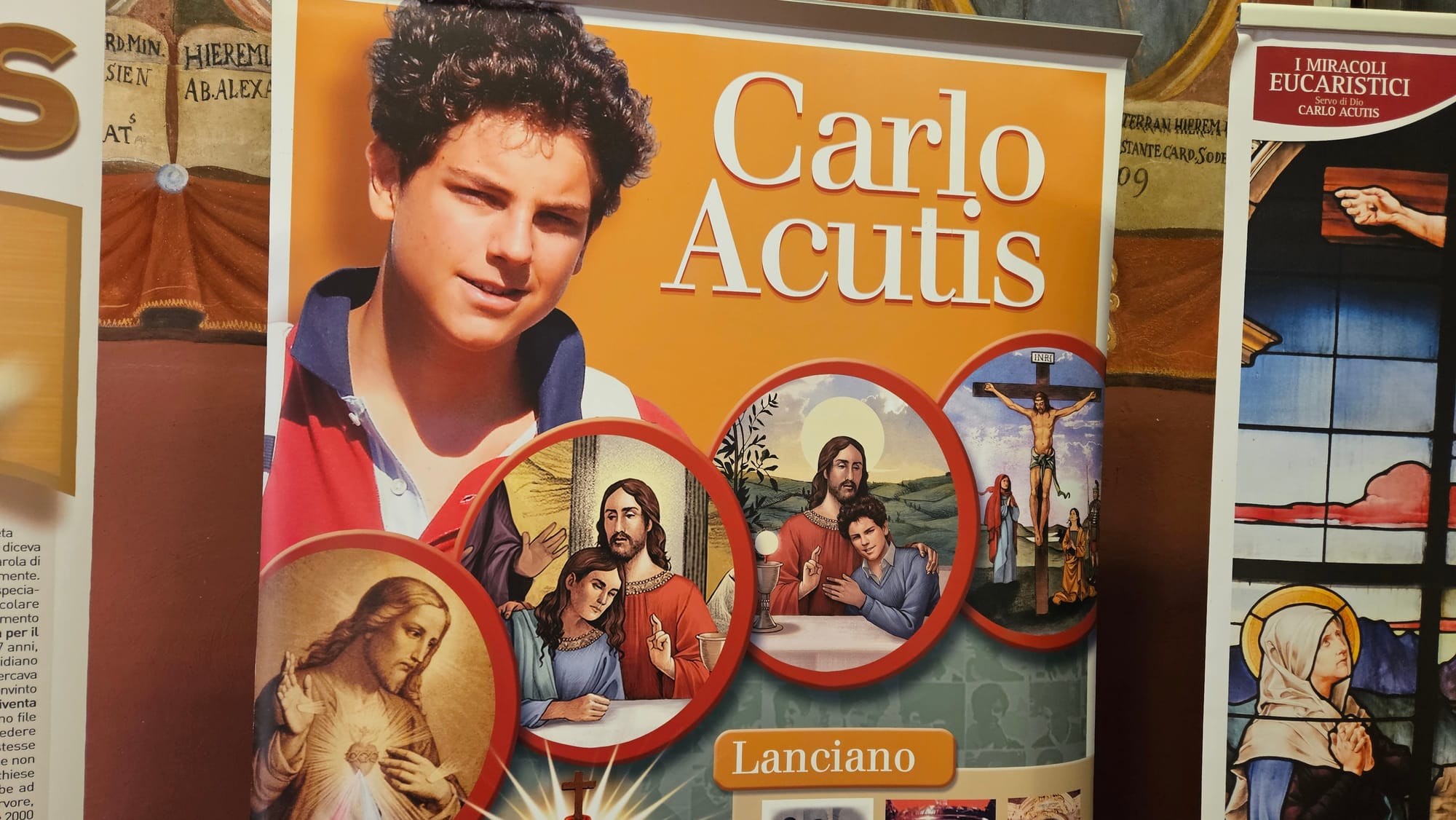
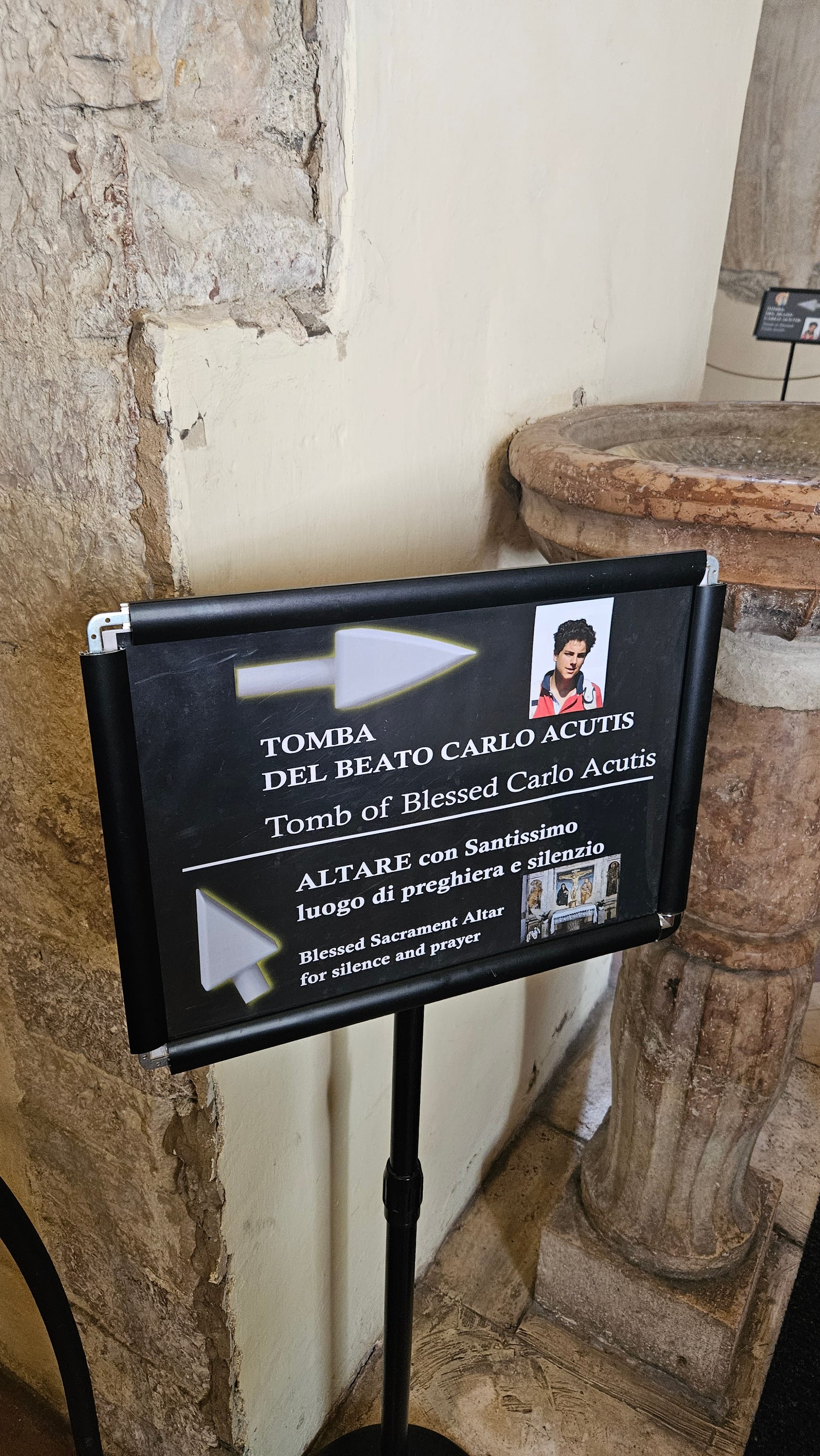
Photos from the gift shop and church where Acutis’ body is held in Assisi. Photo credit: 404 Media
There’s also a lot of online debate about the status of the Gamer Saint’s body. Redditors from r/funeraldirectors to r/Catholicism have been asking about his appearance in the big glass coffin.
“I don’t know man. I’ve pulled off some good embalmings in my career but nothing ever looked as good as this. I can’t explain it,” one funeral director wrote. After I saw him IRL, I was similarly confused. I’ve seen embalmed people, but this wasn’t an embalming. He looks like a mannequin. His folded hands are flat and plasticky. His face is super-smooth and all one color. This is because when he was exhumed in 2019, 13 years after his death, his body showed the “normal process of decay,” the bishop who oversaw the exhumation said, so they covered it in a layer of wax.
From what I understand of sainthood and the bureaucratic process of canonization, it’s pretty hard to become one, and that process often involves getting dug up and moved around. Would-be saints are sometimes exhumed after the local Bishop and the Vatican approve the investigation into their saint-worthiness, because checking out the state of decay is part of it (as is making relics, like the hair on eBay). A body found “incorrupt” means it’s resisted normal decay (allegedly; these exhumations are not exactly open to the public, so we’re relying on the testimony of clergy who were there) while “integral” means the whole body remains but—as I understand it—did not exactly look tomb-display read. Acutis’ body was “reassembled with art and love,” the bishop said.
The legacy of the Patron Saint of the Internet isn’t immune to fake news, either. A priest in Brazil claimed Acutis’ body was incorrupt in a Facebook post, but later deleted it and backtracked.
Having paid my respects, botched a sign of the cross, and bought a magnet for the fridge, I left the Shrine of the Renunciation feeling like I’d just witnessed something stranger than miracles or incorrupt death. A tradition started more than a thousand years ago is brushing roughly up against the 21st century, complete with a livestream where you can submit your intentions at a link in the description. Saint Acutis arrives at a time when young people are being aggressively sold a “trad” lifestyle and leaders with right-wing, Christian agendas are calling the shots from the highest offices. For the Catholic church, the timing might be perfect.
If he hadn’t died young, Acutis would be around my age today, and would probably be a front-end software engineer or a priest who was really good at running the parish Instagram account, or any number of more boring things than venerated saint. And if the church didn’t need an influencer, I wouldn’t be standing in the afternoon sun on the stone streets of Assisi, wondering what we’ll say about the next generation of saints—some of the only people in history whose legacies are preserved across centuries for the encouragement and recruitment of future generations, to a church desperate to have them.